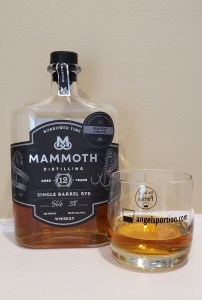Christopher Ian Thoma's Blog, page 6
July 4, 2022
Review – Bradshaw, Kentucky Straight Bourbon, 2 Years Old, 51.9%
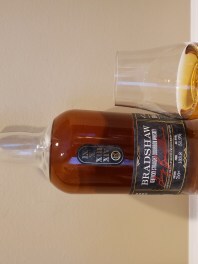
I’ve been told I can’t grow a palm tree in Michigan, so guess what I’m determined to do. Indeed, I’m one to believe, as William Feather believed, saying, “Success seems to be largely a matter of hanging on after others have let go.”
Admittedly, I’ll try to grow the tree inside. I don’t even like Michigan winters, so why would I subject something so vibrantly joyful to what I already know is the earth’s tangible expression of sadness? Although, there appear to be some palm trees that can withstand winter weather. One such tree is the Trachycarpus fortunei, or the windmill palm. This particular upshoot of tropical awesomeness is known to withstand the earth’s snowy tantrums in places as far north as Seattle and Vancouver.

However, let’s be honest. Winter in Michigan is less like a tantrum and more of a complete mental breakdown requiring hospitalization. Snow doesn’t exist in Michigan. Michigan exists in snow. And this is guaranteed to be true for at least eight months of the year, some of those months drinking deeply from the icy well of ungodliness.

On second thought, I know a great spot in my home for this wonder of paradise’s adornments. I’ll grow it beside the “Predator” costume on display. Not only will it stir the sensation of being in the tropics, but it’ll also be a constant reminder to care for the tree, examining it to ensure I’m not being watched by something I can’t see. Where there’s one Yautja, there are often others nearby.
I know this venture sounds rather impossible, but having already sipped from impossible’s dram, I’m willing to try. I say this as several friends in the whiskey world who know my preferences warned me I should avoid the youthful Bradshaw Kentucky Straight Bourbon, and yet, here I sit, finding it rather enjoyable.
Certainly, the nose does begin somewhat stringently. That’s to be expected of a whiskey bottled at 51.9%. Give it a pour, swirl, and a minute or two. Upon return, one discovers sun-warmed cinnamon rolls resting on charred oak planks.
The palate reveals the same mid-summer glee, tossing around in its breezes an enjoyable heat made even better with a little bit of water. A dip in the pool reveals the rye, as well as the charred oak still cradling the rolls.
The finish—a thick resonance of blackberries and vanilla—is long, just as one would expect from this octane level. But an extended stay is the day’s order when summer has arrived. The more heat, the better. Now, if only there were a palm tree to sit beneath.
The post Review – Bradshaw, Kentucky Straight Bourbon, 2 Years Old, 51.9% appeared first on AngelsPortion.
July 2, 2022
Review – Ardbeg, Wee Beastie, 5 Years Old, 47.4%

An alligator is patrolling the pond behind the house we’re currently renting in Florida. We’ve named him Roger. The girls wanted to call him Freddy but eventually agreed with me that he looks more like a Roger. When I hear the name Roger, I think of someone who means all business. This particular Roger appears to be keeping the peace in the pond, tooling around ensuring everything remains in good order.
I’d say he’s about nine or ten feet from his snout to the end of his tail. Whether or not that’s big for an alligator, I don’t know. Maybe I’ll wade out into the water to ask him. He seems friendly enough. I mean, I have noticed him on occasion taking extra care to keep an eye on us—you know, to make sure we’re following the rules. I’ll see him pause, and after a moment or two of me looking elsewhere, I’ll glance back to see he’s hovered a little closer to the shore.
It sure is nice to know he’s there for us.
Not to worry, though. We’re making our vacation ruckus from within an enclosed and approved area about fifty feet from the shoreline. And I check on him regularly, giving a nod to thank him, reminding him there’ll be no need, as the pond patrolman, to kick in the lanai screen and write any one of us a ticket. Or eat us.
I think he wrote a ticket for a raccoon earlier this morning. I saw what I thought were two of the trash pandas by the reeds near the water. Those guys can be real rabble-rousers. Anyway, I heard some splashing, and then a few moments later, I noticed one of the raccoons keeping very close to the edge of the lanai as he departed the area. What a jerk, leaving a friend behind to take the rap alone.
Well, a night in jail might do him some good—and by jail, I mean Roger’s stomach. Although, narrowly escaping such things might also be cause for celebration. Perhaps I’ll raise a finer dram to toast a troublemaker’s repentance stirred by another’s punishment. And maybe a toast to Roger is in order, too, you know, for his tireless labors toward rehabilitating the local wildlife.
In these things, the Ardbeg’s Wee Beastie edition seems appropriate.
With its signature Ardbeg nose, this whisky celebrates with a wash of peat the dirty goodness of down-in-the-muck law and order. It does so also promising its enjoyer pale fruits. I’m guessing pears. A sip sees the promise fulfilled, bringing along in its trolling glide other pome fruits, although they’re delivered generously salted but lightly peppered. Of course, the peat is there. It’s always there, lurking, through to the Wee Beastie’s opportune finish—a rolling splash that lasts just long enough to see you drown in the murky saltwater of its earthy embrace.
I like it. In fact, I may wander down to the pond to share a little with the local sheriff. He’s there right now. Although, and as always, he appears to be on duty. With that, I suppose I can wait.
Until then, here’s to you, Roger.

The post Review – Ardbeg, Wee Beastie, 5 Years Old, 47.4% appeared first on AngelsPortion.
July 1, 2022
Review – Stranahan’s, Blue Peak, Solera Finish, (No Age Stated), 43%
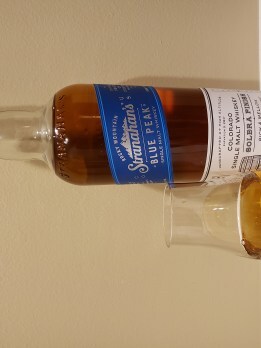
The first vocation I can remember wanting to pursue from childhood was that of an archaeologist. I longed to find the unfindable. Although, what kid didn’t? And then “Raiders of the Lost Ark” came along. With that, my fate seemed sealed. Then in about fifth grade, I recall reading a book in which one of the characters, a doctor, was the wealthiest man in town. Money was tight in my family when I was a kid, and I knew it. After that, I wanted to be a doctor, primarily a surgeon, which was likely true because I was really into the blood-and-guts horror flicks of the 80s.
Of course, other wide-eyed vocational wants came along. I recall wanting to race cars. “Smokey and the Bandit” helped with that. I remember wanting to design special effects for movies. I’d seen “The Thing” on the big screen, and being amazed by Rob Bottin’s creature designs, I wanted in. My friends and I even made a horror movie in the woods behind another friend’s house. It was based on a short story I’d written.
Then came the film “Top Gun.” I walked out of the theater destined to fly fighter jets. I even joined the Civil Air Patrol that had begun assembling at the rinky-dink airport just outside of town. What’s more, in my spare time, I started learning everything there was to know about America’s turbine-powered arsenal. In fact, I recall a colonel in the Air Force visiting my grade school, and on the way out of the classroom, he somehow took to jousting with me, testing my knowledge of his branch’s preferred weaponry. I remember he asked me the thrust-to-weight ratio of an F-15. Without blinking, I answered, “It’s two to one.” I followed my nerdy answer with unsolicited information about Raytheon’s stock prices, assuming he knew that the primary weapons manufacturer for the missiles fitted to the F-15 wasn’t looking so good and that the Air Force might need to consider partnering with a different supplier.
Per the adolescent usual, other vocational wants swept through and went unfulfilled. That’s okay. As you can see, I’m far from anything I described, and yet, I love what I do.
I won’t lie, though. Being a Lutheran pastor certainly isn’t as it used to be. It used to be that a clergyman could walk down the street without fear, being greeted kindly by the usual passersby. Those are alien days by comparison. In the 21st century, insults are standard. For the record, I’ve been spit on, and it happened without me ever saying a word. I was wearing a clerical collar, and that was enough.
Now, before I stray into the borderland of a much darker narrative, my original point was to acknowledge the one thing that birthed all my childhood aspirations and, in a sense, maybe even my current profession: storytelling.
Like the other kids in the 70s and 80s, I read books and watched movies. Perhaps the only difference between my friends and me is that I was burdened by the urge not only to take in and be entertained by content but to produce it, too. The more I took in, the more I wanted to create. And so, I did, mainly through creative writing.
Most of the stories I wrote were scary. I loved the horror genre. It was a bottomless well of fantastical opportunity. I wrote werewolf stories. I wrote zombie stories. I wrote ghost stories. I wrote stories about aliens. I wrote stories about rats. I wrote and wrote some more. Looking back at these things, I realized I was not destined to be an archaeologist or racecar driver. Instead, I was meant to create worlds in which all of these things and more could be examined and enjoyed—and maybe even understood more deeply. Because my primary vocation in life is that of a pastor, I don’t necessarily get paid all that much to write. Still, I do a lot of it, and with that, I think Roald Dahl was onto something when he said, “A person is a fool to become a writer. His only compensation is absolute freedom.”
There is utter freedom in writing.
Within a few short plinks at the keyboard, I can be anywhere and anywhen as anyone or anything. Even better, with the right words in the proper order, I can bring others into the narrative with me. And no one can harness the story, preventing it from being told. People wonder why I write so much, especially when only a fraction of it reaches an atom-sized splinter of the world’s population. Well, whether what I’m producing is to be counted as gold or garbage, unfettered creative liberty is the reason.
I’m guessing Dahl’s observation applies to other creative vocations, too—the field of whiskey-making being one of them. Stranahan’s certainly emits a storytelling quality, being masterfully imaginative with the editions they’ve produced over the years. The Blue Peak Solera Finish is one such musing.
With a nose of malt, raspberries, and cream, the Blue Peak tells of an explorer wandering from a tropical path searching for something known to exist that has remained undiscovered. The palate delivers on the chance taken, pushing past easy underbrush of warmth to reveal virgin fields of flowering carob trees—which produce seeds that taste like chocolate but are much sweeter. Orange trees and vanilla orchids tinged with cinnamon adorn the spaces in between.
The whiskey’s medium finish is its invitation to return to the newfound paradise anytime the explorer desires—and to bring friends for just as blissful an introduction.
As I said before, I’m endeavoring to use words in ways that encourage examination, enjoyment, and a deeper understanding of things. When it comes to whiskey in particular—mainly because far too many imbibers choose to associate with the well-worn path—my simplest hope is to introduce undiscovered possibilities and, perhaps, to smile with delight when a personal favorite is unearthed and ultimately treasured.
By the way, if I ever play a part in such a discovery, know that I’ll gratefully accept favorited samples. Remember, the whiskies of paradise want you to share.
The post Review – Stranahan’s, Blue Peak, Solera Finish, (No Age Stated), 43% appeared first on AngelsPortion.
June 30, 2022
Review – Endless West, Glyph Royal, (No Age Stated), 43%

“Harrison! Madeline!” Jennifer called, intending to enlist her two teenage children in a task while expecting an immediate reply. Their silence was the moment’s only order. And so, she called again. And then again. A feeling of disrespect increasing, and rightfully so, she made her way through the house to retrieve them, resolutely calling their names.
“I don’t think they’re here, honey,” I said, interrupting her swift pace toward the kids’ usual haunts. “They went for a walk around the neighborhood.”
A second or two passed.
“Never mind!” she hollered somewhat penitently to her offspring… who were not there… because they were not even on the property.
I laughed. When she realized what she’d done, she did, too. It was purely psychological. Or better yet, spiritually innate. In her focus, she had become caught up in the motion of the moment, and the only way to escape from the increasingly powerful assumption that the children were ignoring her was to stop and, with the same level of energy, apologize to them, even though the fact remains they weren’t even there.
I like that about Jennifer. She’s humble that way. T.S. Eliot once said, “The only wisdom we can hope to acquire is the wisdom of humility.” If this is true, Jennifer is the wisest person I know. I say this because she demonstrates it even when her emotions seem ready to conquer. Although, there have been a few times when she’s awakened from sleep unjustly angry with me because of something I did in a dream. Still, I chalk that up as a wife’s prerogative and the benefit of reality. If I’m going to tick her off, I’d rather it be because of imagined offenses rather than real ones—such as the genuine crimes perpetrated by Endless West’s Glyph Royal edition.
It’s been a while since I’ve had a terrible whisky. Most drams have their redeemable qualities. And as anyone familiar with my whisky narratives probably knows, it would take a seriously unique mixture of swill to knock Scoresby from its place atop Mount Garbage. And yet, the Glyph Royal edition appears to have at least gathered its mountain climbing gear and set its sights on the summit.
The nose of this whisky is relatively indescribable. Each whiff presents a different sort of pungence, so much so that it really is rather challenging to find what’s causing the affronting sting. It seems almost candy-like—maybe cake frosting. Whatever’s in there, it’s a mixture into which someone dumped a few gallons of vinegar and some spoiled vegetables. There may even be some embalming fluid, too. The palate is the same. There’s something sweet in there, but it’s hard to find in the murk of syrupy rot. These things come together in a medium finish requiring mouthwash. That’s it.
In short, to label this edition “royal” is a bit bold.
Having said all this, I’m willing to admit that one man’s trash is another man’s treasure. There may be some out there who love this stuff. Truth be told, if there’s one thing I’ve learned over the years of writing reviews, it’s that my opinion means nothing except to express a personal preference. That being said, I offer only words of warning. If you’re calling out to the Glyph Royal with the hopes of enlisting it for service in your keep, you should know that it won’t respond because it’s not even on the whisky premises. It’s out wandering around the neighborhood, trying to figure out its bearings. Better yet, it’s busy climbing. With that, be ready to apologize for expecting anything from it.
The post Review – Endless West, Glyph Royal, (No Age Stated), 43% appeared first on AngelsPortion.
June 29, 2022
Review – Bruichladdich, Octomore 11.3, 5 Years Old, 61.7%
Some decisions are more complicated than others, requiring deep deliberation and careful interpretation of countless seen and unseen factors. Other decisions all but make themselves. Take, for example, the following invitation posted at an island kiosk in a mall I recently visited in Florida—a mall that was emblematic of a movie in which its main character has been traveling a backwater road for hours without seeing another vehicle only to end up in a small, boarded-up town guarded by a family of hungry cannibals.

As you can see by the sign’s flashy presentation—and by flashy, I mean the exclamation point—its reader is invited to take a chance on a profitable retail opportunity, one with incredible potential. The only problem with this fork-in-the-road decision is that the shop immediately behind the kiosk has the same sign, as do about 75% of the shops and stalls throughout the mall. The only decision to be made at this moment is to continue making your way back to your van, lest that van eventually becomes your home because you decided to hock your crap in a mall that can only be saved by a defibrillator in the hands of the divine.
My guess is there are two ways to save this mall. The first way is spiritual. In other words, rescue it by letting it pass into mall heaven where it will hunger and thirst no more. The second involves selling something absolutely amazing at one of these kiosks. And by amazing, I don’t mean what the handful of current poor decision-makers tried to assure me were amazing as I passed their kiosks—things like hair care products and custom-made mobile phone cases. I mean stuff like pet xenomorphs, invisibility cloaks, functioning lightsabers, teleportation devices, machines that allow you to communicate with and befriend animals, and cereal packaging that’s relatively easy to open. Things like these would bring the crowds.
Although, and perhaps more practical, if the state liquor commissions would lessen their nazi-esque chokeholds on booze, there’s a good chance a kiosk with the right assortment of drams could serve to revitalize any retail space in economic hospice. This morning, I read that the worldwide whisky market cashed in at about $57.96 billion in 2021. What’s more, it’s projected to hit $90 billion within the next five years. That’s a 6.4% compound growth rate for an incredibly regulated market, and by comparison to previous years, it’s a relatively conservative estimate. Imagine alone if the liquor commissions in America, one of the world’s largest whisky-producing and consuming markets, loosened their taxation nooses a little, making more whiskies more affordable to more people. It is an economic fact that lower taxes always result in more government income from more products sold.
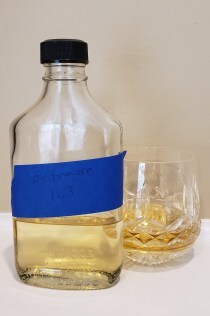
If this were to happen, it’s possible that the mall’s blue invitation to an entrepreneurial decision would entice more passersby. Even now, I wonder how many bottles of Bruichladdich’s Octomore 11.3 would fit comfortably on the top shelf of one of those island kiosks in the images I shared. Sixty, maybe seventy? I ask because if ever there was a dram worth the reach of a broader society, it’s this one. What a complete gem!
The whisky’s nose is an effortless compilation of peat, vanilla beans, and the gentler sensations of a warm summer day beside the ocean. The wafting sea air is distinct. The palate isn’t so quiet. In fact, it throttles the mouth a little before revealing its more gracious side. After the bite, it sends along paprika, black pepper, and maybe even some salted sunflower seeds. A second sip is an insistent portion of dark roasted coffee beans. A mouthful of coffee beans might seem challenging, but in actuality, it is uniquely enjoyable.
The Octomore 11.3 departs, leaving the imbiber mindful of its peat. But that’s not all. There is the surprising revelation of charred fruit, likely peaches. This sweeter sensation is so unique that it stirs another sip before the finish’s duration can be determined—which, as it would go, is quite long.
I would frequent the mall regularly if this edition of the Octomore were reasonably accessible at a mall kiosk. If it weren’t well beyond $200 a bottle, I’d purchase several each time I visited. Indeed, it is a joy and pleasure that proves whisky’s bright future. And so, another decision is now before me as I search for shops possessing the Octomore 11.3: a delightful dram for a wearied clergyman or food for my children. The choice seems easy enough.
The post Review – Bruichladdich, Octomore 11.3, 5 Years Old, 61.7% appeared first on AngelsPortion.
June 28, 2022
Review – The Macallan, Gold, Double Cask, (No Age Stated), 40%

In my line of work, it’s not uncommon for people to ask which Bible story is my favorite. It’s also not unusual for me to avoid giving an honest answer to the question. In other words, I share favorite accounts, but I don’t necessarily say what I like about them.
For instance, I might say that I like the accounts in which all hope seems lost, but victory is suddenly had. The story of the Israelites crossing the Red Sea is a perfect example (Exodus 14:1-31). God purposely led the people into a geographical dead end—a peninsular area that was inescapable. Their only hope as an unarmed mass of formerly enslaved people was to fight the world’s most powerful army or build a navy of boats that could carry all three million of them, including their supplies and animals, across the sea. So, what happens? God parts the sea. Amazing.
Another account I enjoy describes Elijah and the 450 prophets of Baal (1 Kings 18:20-40). Essentially, Elijah challenges the prophets to test whose God is genuine. Elijah asks King Ahab for two bulls, one for himself and one for the Baal prophets. The goal: sacrifice the bulls and pray, and whichever deity answers by fire would be considered legitimate. The Baal prophets dance around, cut themselves, and do all sorts of stupid things. When it’s Elijah’s turn, he ups the ante against himself. He douses his bull three times, soaking it with so much water that it fills a surrounding trench, making the whole altar area unburnable. Then he prays. God sends fire down that reduces everything to ash, even drying up the water in the trench.
Good stuff. And whether you believe these things happened or not (which I believe happened), they both have the best elements that make for great storytelling.
But I didn’t tell you what I like about them.
Sure, they’re against-all-odds nail-biters. Indeed, their themes display God’s deliverance of those who trust in Him. Unfortunately, I’m attracted by the elements of vindication that end in divine retribution. God gets His people across the sea and drowns every last one of the Egyptians trying to kill them. God proves Elijah to be the true prophet and then slaughters all 450 of the prophets of Baal, a contingent of men and women who were no strangers to human sacrifice.
See what I mean. Like everyone else, I have my darker inclinations. In particular, I not only like seeing the good guys win, but I like seeing the bad guys get what’s coming to them. I can sometimes be a little like Jonah, a man sent to Nineveh to call them to repentance, and when they did, he was bothered that they didn’t get punished anyway. I’m sometimes like James and John, the two disciples who wanted Jesus to call down fire from heaven on a city that refused to receive them. Like them, I appreciate seeing Jesus stick it to a crowd of people rebuking a blind beggar. I grin a little when Jesus is laughed at for saying a dead girl is merely sleeping, and then He kicks the mockers out of the house before raising her from the dead. I’m not put off by seeing Jesus fashion a bullwhip and then use it on a few people as He kicks over tables.
I like movies in which the underdog wins big. I like stories in which the pauper eventually becomes the prince. But I also appreciate narratives of vengeance, ones that see the good guy cleaning house and inflicting upon the villains what the villains were intent upon doling out to the innocent.
I liked seeing William Foster (played by Michael Douglas) in the film “Falling Down” take out his Uzi and absolutely light up a phone booth so that a man who’d treated him incredibly rudely couldn’t use it. “I think it’s out of order,” Foster says and walks away. I liked seeing Thanos and his crew drift away into ash at the end of “Avengers: Endgame.” I wanted John Rambo’s return to town. I liked watching the kids in “Red Dawn” avenge their parents. The problem—and I’m admitting it—is that my secret joy in these things only proves how blessed I am as an equally rotten person to be spared. It’s like the kid in “Unforgiven” who, after executing an unarmed villain doing his business in an outhouse, tries to convince himself that the man had it coming, only to hear Clint Eastwood’s character say, “We all have it coming, kid.”
He’s right. We all have it coming.
Now, before this becomes a sermon, let me get to why any of this came to mind when I sipped The Macallan Double Cask Gold edition.
The Macallan is often considered the Rolls Royce of whisky and, as a result, gets a pass from far too many. And yet, as untouchably pristine as The Macallan might seem, its Double Cask Gold edition proves the inherent capability for failure possessed by all—and there’s a secret place within me that’s glad for this.
Although, let me be clear. This whisky is not horrible. It’s just not worthy of a snobbish place on the top shelf beyond the reach of the rest of us sinners. I’ve seen this in Michigan for just shy of $200. That’s too much. Double Cask Gold is a $50 whisky at best. It belongs in the middle—or maybe even lower—beside the likes of The Glenlivet Founder’s Reserve and Glenmorangie’s Lasanta.
For one, the nose seems artificial, somewhat reminiscent of a scented candle, and not a spiced candle designed to wash a home in fragrance, but rather a candle meant for keeping the mosquitoes away. It’s an unnaturally piercing citrus. The palate isn’t so bad, bringing along some of the better things The Macallan is known for, which are chocolate, caramel, and cinnamon. Still, it’s nothing new, nothing extraordinary.
The finish is where this whisky has me awaiting its dissipation into ash. Besides a fast-fleeting rendezvous with the chocolate from the palate (that has now become bitter), the whisky leaves behind very little else. It’s as if it knows that if it stays too long, it’ll eventually get what it deserves.
The post Review – The Macallan, Gold, Double Cask, (No Age Stated), 40% appeared first on AngelsPortion.
June 27, 2022
Review – Deanston, Virgin Oak, (No Age Stated), 46.3%
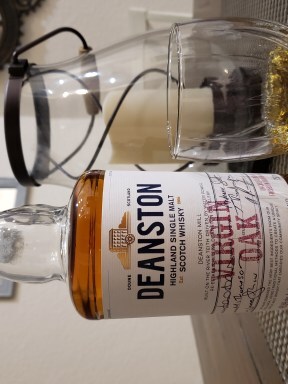
It’s been a while.
Yes, I know.
It’s not as though I haven’t been writing anything. I write a lot. And I do it constantly. Perhaps unfortunate for some, another of my blogs is getting most of my free-form attention.
Since I’m making excuses for my absence, another of my reasonable pleas is that I’ve recently begun a doctoral program. Although, it hasn’t been as burdensome as I expected. I suppose that’s only because I’ve discovered I can take in a lot of information—and write even more—in a brief period. For example, I read fourteen books and wrote twenty-one papers in the first fifteen days of the current subterm, accomplishing all eight weeks of work for two courses in a little more than two weeks. I set a schedule and then hunkered down. The original plan I’d written had me finishing in five weeks. I soon learned that my inner cravings had a much swifter pace in mind. I gladly surrendered to its desires. Doing so allowed the rest of my regular life and its schedules to be managed—and perhaps even enjoyed—more comfortably.
In one sense, steering directly into the intense storm of labor—a storm that cannot be avoided in certain circumstances—is always best. Procrastinating or deferring only makes the possibility of calmer seas beyond the tempest that much harder to envision as reachable.
Do it. Get about the business of wrestling with the winds and waves. And give it all you’ve got. The sooner you do this, the sooner you’ll be hoisting sails in the sunshine, enjoying the more tranquil seas of leisurely manageability.
One of my favorite handlers of the written word, Stephen King, once said of other writers, “Amateurs sit and wait for inspiration. The rest of us just get up and go to work.” King’s advice serves any field. Observe the oncoming challenge. Deliberate, but don’t procrastinate. Get to work. Prepare, set a course, and launch. It might be the worst plan in the world. Still, at least you’ll learn it was the worst plan because you’ll be out on the water fighting toward your goal. You’ll turn the rudder and aim for a better course. With each adjustment, you’ll receive success in tiny doses until, finally, you drift into quieter waters.
I’m sure some are reading this and already being anchored by “It’s easier said than done.” Exactly. It is easier said than done, which is why Thomas Sowell once said something like, “The least productive people are usually the ones who are most in favor of holding meetings.” Sayers like to talk about doing. They’ll spend inordinate amounts of time talking about efficiency, productivity, and other such things. In the end, nothing is as inefficient or non-productive as never getting around to doing what needs to be done. Eventually, doers cut the chatter and get to doing.
I’m one to think that any reasonable challenge requires a single meeting with leadership. After that, all become the crew of a vessel that has likely already set sail. Each performs, and each will probably consult with others along the way. Let that be enough.
Now, before this becomes a motivational speech on work ethics, let me get to doing, which is to describe the Deanston Virgin Oak edition I just picked up at a shop in Port Charlotte, Florida. True to form, I wasted little time in the doing. As soon as I got home, I popped the cork. I spent even less time identifying and then swatting at the vinegared fumes released from the bottle.
This was somewhat surprising. I’ve never known a Deanston whisky to be so harsh from the bottle. Suffice it to say that a few minutes in the glass proved delightful, suggesting that the strengths of the citrus and malt, both of which can be imagined individually in the nosing, had somehow become a potent storm collecting beneath the cork and awaiting release.
A sip reveals somewhat of a sour bite, not necessarily unenjoyable, but rather more like a bitter coffee. There are other bits of success to be had with each swirl, swish, and savor, such as vanilla and spicy cola.
The finish is quite dry, leaving very little behind. What does remain—which seems a little bit like the nose’s citrus trying to cross over to the palate and being tinged along the way by spice—is a creative conclusion. Again, it is fast fleeting, but still noticeable and by no means unenjoyable. In fact, it would make an easy companion on board one’s vessel. Perhaps better, it would serve well in the pocket flask of any doer trapped in a meeting filled with sayers.
Of course, as a pastor, I’m not saying I’ve done this. Remember, I don’t consider myself a sayer.
The post Review – Deanston, Virgin Oak, (No Age Stated), 46.3% appeared first on AngelsPortion.
August 9, 2021
Review – The Glenlivet, 18 Years Old, Batch Reserve, 40%
It’s 2:36am. Why am I awake? Because I had surgery less than twelve hours ago to repair the severed Achilles on my right leg, and the local anesthesia that was used is beginning to wear off. In other words, I can feel that the real pain is about to begin.
Interestingly, I heard a roll of thunder outside my window just as I began wiggling my toes and sensing flashes of the pain’s arrival throughout my leg. Appropriate, don’t you think? A storm is coming.
I’ve been prescribed plenty of pain medications; hydrocodone, to be precise. The problem, however, is that I don’t tolerate these types of medications very well. The heavier meds nauseate me enough to make me vomit. The Zofran they sent along to combat this side effect seems to help only a little. Familiar with these things, it’s likely I’ll only take the medications when the pain reaches the absolute stratosphere of my tolerance. And by stratosphere, I mean it’s become so intolerable that piles of woodchips are beginning to form in and around my bed as I’ve begun whittling a peg leg from the desk beside me. This will be the sign that I’m wrestling between taking the medications or sawing the leg off below the knee and going “Long John Silver.”
You should know I almost went a little “Captain Silver” in the waiting room at the surgical center. Mind you, I wasn’t allowed to eat after midnight. I’m guessing this is a mandate doctors learned to impose after having dissected a Mogwai in medical school. Just know that my surgery was scheduled for 2:30pm, and by the time I arrived, I could’ve eaten the chair in which I was instructed to wait. But that’s not the hardest, most tortuous, part to this.
Apparently, Nurse Ratched works somewhere on the premises, and I’m guessing she’s been given charge of the waiting room television. I say this because the TV was so villainously trained on the Food Network, and some guy—Jeff Mauro—was giddily offering all sorts of rage-prompting delights on the screen. Turning my face away from the TV to focus more intently on the seemingly lesser pain from my injury did very little for me in that moment. The volume was turned up and the chef’s poetry-like descriptions of sweet barbecue-dipped morsels flanked by an assortment of creamy garnishments left me desiring death.
Thankfully, the surgeon was running ahead of schedule, and with that, Jeff was only allowed to waterboard me psychologically for about fifteen minutes. Admittedly, when I was called back, I looked very closely at my attending nurse’s nametag. You know, just to be sure it didn’t read “M. Ratched.”
It didn’t.
As it turned out, the nurse’s name was Amy, and like me, she was a Lutheran. Doing what nurses do to distract a patient while turning on devices and ramming harpoon-sized needles into various appendages, she asked more about me—how I injured myself, what I do for a living, what hobbies I enjoy. When she learned my vocation, she confessed to being in the market for a new church, saying her pastor seemed more inclined toward being accepted by the culture around him than being faithful to his calling to preach and teach from the Bible. When she learned that I’m exactly the opposite of this, she asked what time services were on Sundays. When the anesthesiologist (who’s entered the room only a moment before) overheard the discussion, along with the title of one of the monthly Bible studies I teach—Whisky and the Word—he asked about worship times, too.
Maybe I’ll see them both again. Maybe I won’t.
Either way, here I am on the flip side of surgery, still a little foggy as I watch the shoreline waters of mild soreness get pulled out to sea by the approaching tsunami of discomfort. As it retreats, I’ll tell you a little secret. Another reason I want to avoid the pain medications is because of their cautionary labels against consuming alcohol. I mean, giving up the calm I receive from an occasional dram seems like an awfully big trade off, especially when I know there’s a bottle of The Glenlivet 18-year-old Batch Reserve (a Father’s Day gift from my eldest son, Joshua) that can be easily fetched and poured by any one of my four children.
Bearing scents of spiced malts and ripened citrus, the nose promises a dutiful nurse in the forthcoming sips. The palate fulfills the pledge, tending to one’s discomfort with tranquilizing nips of ginger, butter, and sweetened grapefruit.
Medium in length, the finish brings a warming quiet of allspiced-vanilla and citrus that cannot be matched, even by a pharmacist’s labors.
Of course, some may be reading this and thinking that exchanging the pain medication for the enjoyment of my customary evening dram is nothing short of foolishness. In their estimation, I appear to be subjecting myself to unnecessary suffering. Alas, this may be true. But as I shared previously, I already know that with or without pills, the first week of the forthcoming ordeal promises struggle, whether it be from physical pain or the continued wrestling with nausea and vomiting brought on by the pills meant for dulling, but completely relieving, the pain. I guess I’d rather choose the foolishness that grants me time with something that makes me smile, knowing there’s at least a sliver of wisdom to the saying that the foolish things we sometimes regret the most in this life are ones we avoided when they presented themselves.
The post Review – The Glenlivet, 18 Years Old, Batch Reserve, 40% appeared first on angelsportion.
August 7, 2021
Review – Mammoth Distilling, Borrowed Time, 12 Years Old, Single Barrel Rye, 62.5%
Every region in the United States produces distinctly identifiable things.
In a group conversation, it won’t be difficult to tell who was born and raised in Boston. On a cool October day in Wisconsin, while the natives may still be wearing shorts and t-shirts, visiting Floridians will be easily discovered by their hats, scarves, and thick winter coats. California has its sunlit coastal towns and palm trees. An easy-speaking gent from the Louisiana bayou may need to repeat himself when chatting with a newfound acquaintance from Massachusetts. The high school parking lot in a deeply central Indiana town may have a tractor or two. “Yous guys” and “Y’all” will draw lines between a New Yorker and a Texan.
Michigan is no different. Like all other places, we have our quirks. Specifically, we’re well known for our roads and the aggressive natives who traverse them.
I’m pretty sure you’ll know you’ve crossed the border into Michigan when your vehicle suddenly begins convulsing and spitting fluids as though it’s possessed by the devil and Fathers Damien Karras and Lankester Merrin are in the back seat sprinkling holy water while shouting, “The power of Christ compels you!” Yes, the roads are that bad. Another clue will be when, with your turn signal blinking the whole time, you find yourself traveling seventy-six miles of congestion behind a slow-moving truck before someone finally allows you into the passing lane. Yes, everyone in Michigan appears to be in competition with one another. I’m guessing the goal of this high-speed death race is to be the first to find the largest, most car-consuming, pothole on the freeway to smash into.
Thankfully, Michigan has a little more to offer its visitors than thousands of miles of nearly unnavigable roadways and the promise of car repairs. Our lakes are quite nice. The autumnal color change to our tree-covered landscapes is always a memorable experience. We also have craft whiskies. And as it is with other regional offerings throughout the United States, while some of our whiskies are to be avoided, others are well worth the Thunderdome-style crossing into our wilds. The Borrowed Time 12-year-old Northern Rye from Mammoth Distilling is one of those whiskies.
With an aggressive nose of spice, namely cloves and nutmeg, you’ll know well before the first sip that this 12-year-old is anything but shy. Of course, that’s to be expected at 62.5% ABV.
An undiluted sip brings a biting (but still incredibly pleasant) mouthful of buttered and honey-dipped toast generously dusted with cinnamon. With a few drops of water, the honey challenges the butter for prominence.
The finish is surprisingly longer than expected, but not unenjoyable, like the seventy-six miles behind the truck. Instead, it’s a pleasant stroll at the edge of a favored stream, one carrying along in its warmer trace the spices that first upsurged in the nosing.
Keep in mind, if this edition isn’t available in your state, acquiring the pleasantries I’ve described will come with a price. To pay it, I recommend donning a mohawk, black hockey mask, chainmail, shoulder pads, and studded leather pants before attempting to cross over into Michigan. What’s more, I’d preemptively contact your auto insurance company to let them know your car was totaled.
Just trust me on this one.
The post Review – Mammoth Distilling, Borrowed Time, 12 Years Old, Single Barrel Rye, 62.5% appeared first on angelsportion.
July 24, 2021
Review – Stillhouse, America’s Finest, Original Whiskey, 100% Tennessee Corn Whiskey, 40%
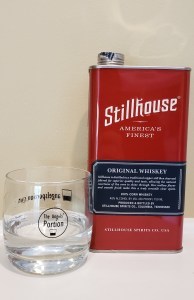 Is it me or has it become quite fashionable for certain radically individualized members of our society to debate their morally ethical opponents by saying Jesus never judged anyone?
Is it me or has it become quite fashionable for certain radically individualized members of our society to debate their morally ethical opponents by saying Jesus never judged anyone?
Apart from the disingenuous nature of wielding a book they’ve never really read against opponents who more than devotedly have, I’m guessing they most often employ this tactic when their shallow wellspring of evidence runs dry, because an honest stroll through the words and actions of Jesus will do little less than prove precisely the opposite.
When Jesus comes along kicking over tables, or calling a person a son of hell, or threatening the same destruction that Sodom and Gomorrah received to all who will not listen to the ones He sends, it sure seems like He had moments when He was found to be a bit… well… judgey.
I suppose that remains a judgment call the internet-assembled, weed-smoking, wokester theologians will have to make for themselves.
Nevertheless, while the rest of us ponder our more genuine intentions for engaging in any particular argument, may I make a few suggestions for consideration?
The first is to remember that objective truth and natural law never disagree, and the only way to alter this fact is to redefine one or the other. Jumping into a swimming pool will leave you wet.
I’ll just leave that there.
The second is to consider a much simpler reason for differing opinions that result in an arguments. Perhaps the contention is really between one of the participants and himself. In other words, perhaps the argument isn’t occurring because two individuals disagree, but rather because they agree. It’s likely both contestants know what’s true and what isn’t. It’s just that deep down, one is wishing he didn’t know these things, and as a result, he’s doing all that he can to convince himself otherwise.
In one sense, I offer this perspective from experience. There are plenty of whiskies I’ve wanted to like—whiskies that have won this or that award from the high-browed experts—but in the end, I just couldn’t cross the border into their illusionary lands. I wanted to believe their perspectives were righteous and good, but I just couldn’t. Objectively speaking, sour is not sweet. Harsh is not smooth. Syrupy is not clean.
Jumping into a swimming pool will leave you wet.
Not that Stillhouse’s Original Whiskey has won awards, but it was glowingly recommended to me by a friend. I bought it. I tried it. Objectively speaking, it’s terrible. And the best thing a friend can do for another friend is to tell him the truth.
The nose of this crystal-clear spirit is thickly humid with alcohol and sour corn. The palate is… well… thick and syrupy with alcohol and buttered corn. The finish sticks around long after the debate has been lost to argue the glories of isopropyl-soaked corn, all the while reminding the sipper not to be too judgmental of such things—just like Jesus.
“Do people pick grapes from thornbushes, or figs from thistles?”
No, Jesus. They don’t.
“Thus, by their fruits you will recognize them.”
Truth.
The post Review – Stillhouse, America’s Finest, Original Whiskey, 100% Tennessee Corn Whiskey, 40% appeared first on angelsportion.


